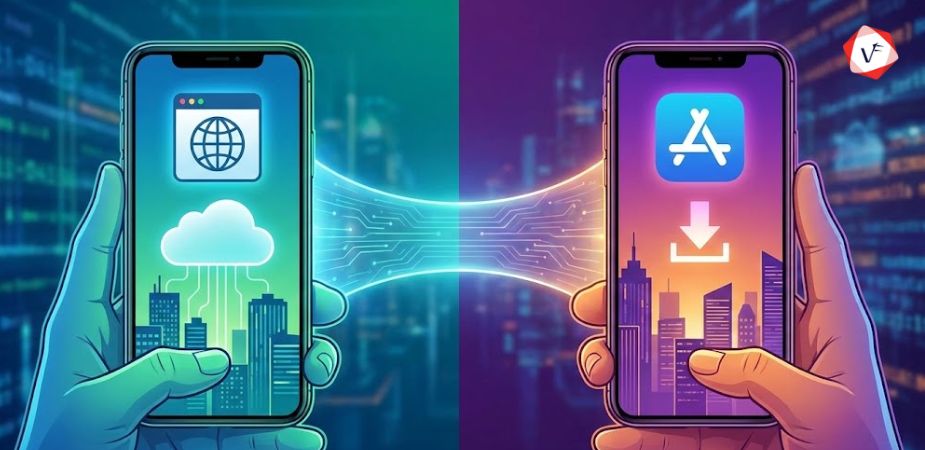- July 28, 2025 10:41 am
- by Kevin
- July 28, 2025 10:41 am
- by Sooraj

The evolution of immersive technology in recent years has transformed how we interact with our surroundings. Augmented reality (AR) and virtual reality (VR) are at the forefront of this technological revolution, each offering unique ways to enhance our perceptions and experiences. This article delves into augmented reality versus virtual reality, exploring their definitions, applications, challenges, and future trends in immersive technology. By examining interactive experiences, digital overlays, and simulation techniques, we shed light on the innovations driving these revolutionary technologies.
Augmented reality is a transformative technology that seamlessly blends digital content with the real world. Through devices such as smartphones, tablets, and AR glasses, users can view interactive overlays, spatial computing enhancements, and digital enhancements superimposed onto everyday environments. Augmented reality’s ability to combine a digital overlay with real-world images provides users with an interactive experience that bridges the gap between physical reality and virtual elements. This fusion is particularly impactful in sectors like education, healthcare, and retail, where augmented reality offers interactive tutorials, real-time data visualization, and enhanced product information.
The power of augmented reality lies in its capacity to enhance spatial awareness and create augmented experiences that are both informative and entertaining. AR’s role in tech innovation continues to grow as it provides real-time interaction and active learning environments. With augmented reality, complex data becomes accessible through immersive digital displays, making it easier for users to comprehend and interact with information in a more intuitive manner.
Augmented reality has found its way into multiple industries, enhancing interactive experiences across various applications. In the field of education, AR enables immersive learning environments where digital content, such as 3D models and interactive graphics, complements textbooks and lectures. This digital overlay makes abstract concepts more tangible and easier to understand. Healthcare also benefits from augmented reality by providing surgeons with real-time data and enhanced visualizations during procedures, ultimately leading to improved outcomes. Retailers use AR to offer virtual try-ons and product demonstrations, allowing consumers to experience items before making a purchase.
AR’s capacity for real-time interaction and spatial computing innovation ensures that industries continuously explore augmented reality’s full potential. As more organizations invest in AR technologies, the synergy between the physical and digital worlds becomes increasingly evident, paving the way for further advancements in immersive technology.
Virtual reality, in contrast, creates an entirely immersive digital environment that isolates users from the physical world. Using head-mounted displays (HMDs) and VR controllers, users are transported into simulated worlds that can be designed for gaming, training, or storytelling. VR offers an unparalleled level of immersion, transforming entertainment and professional training through lifelike simulations and realistic interactions. Virtual reality’s simulated environments open up possibilities for exploration, creativity, and experiential learning that transcend the limitations of physical spaces.
The depth of virtual reality is seen in its ability to craft fully immersive worlds that replicate real-life scenarios, from virtual tours of historical sites to complex training simulations in industrial settings. As virtual reality matures, it will not only push the boundaries of digital immersion but also serve as a platform for mixed reality and extended reality (XR) developments, which further integrate virtual elements into our daily lives.
Virtual reality’s impact spans a wide array of industries, with applications that redefine user interaction through immersive simulation. In gaming, VR creates rich, interactive experiences that allow players to step into fully realized digital worlds. Virtual reality is revolutionizing entertainment by offering lifelike simulations where users can interact with characters, navigate detailed environments, and experience narratives in a profoundly immersive manner. Similarly, industries like architecture and real estate benefit from VR by providing virtual tours and design visualizations, which help stakeholders explore spatial designs and innovative structures without leaving their homes.
Furthermore, virtual reality is increasingly integral to professional training and education. Through immersive simulations, VR offers interactive experiences that train employees in high-risk scenarios safely and effectively. Fields such as aviation, medicine, and manufacturing utilize VR training modules that replicate real-world challenges, fostering better preparedness and enhancing decision-making skills.
When comparing augmented reality and virtual reality, the differences become apparent in the way each technology interacts with the real world. Augmented reality overlays digital content onto the physical environment, providing users with enhanced real-time data and interactive visuals. In contrast, virtual reality creates a completely separate, simulated environment that immerses users away from their immediate surroundings. This fundamental difference makes augmented reality ideal for applications that require a blend of digital and physical elements, whereas virtual reality excels in scenarios where full immersion is necessary for training, entertainment, or simulation.
The choice between AR and VR often hinges on the intended use: AR is preferred when interaction with the real world is vital, while VR is chosen for its capacity to create detailed, immersive simulations. Both augmented reality and virtual reality are instrumental in pushing the boundaries of tech innovation, as they continuously redefine interactive experiences and foster new realms of creativity.
The line between augmented reality and virtual reality is becoming increasingly blurred as the two technologies converge in what is known as mixed reality (MR) or extended reality (XR). These integrated approaches combine the strengths of both AR and VR to offer hybrid experiences that provide the digital overlay of augmented reality alongside the immersive simulations of virtual reality. Mixed reality and extended reality are at the bleeding edge of immersive technology, enabling users to interact with virtual objects within a real-world context and vice versa.
The fusion of these technologies is driving unprecedented innovation in fields such as remote collaboration, design visualization, and entertainment. By leveraging the best aspects of both augmented reality and virtual reality, developers are crafting comprehensive interactive experiences that redefine how users engage with digital content.
While augmented reality and virtual reality continue to push the boundaries of immersive technology, they face several challenges that need addressing. Technical constraints such as limited processing power, battery life, and latency affect the interactive experience on mobile devices. Digital overlay precision and the seamless integration of 3D simulations remain ongoing hurdles. Moreover, user comfort issues like motion sickness and the steep learning curve for novel AR/VR interfaces demand further refinement in both hardware and software. Addressing these obstacles is crucial to advancing the quality of immersive experiences and accelerating broader adoption.
Across industries, augmented reality and virtual reality have transformed business operations and consumer engagement. Retailers leverage digital overlays to offer virtual try-ons and interactive product demonstrations, while real estate and architectural firms utilize virtual simulations for virtual tours and design visualizations. Educational institutions have integrated immersive technology to create interactive learning environments that enhance comprehension and retention. Additionally, healthcare professionals benefit from realistic simulation training that improves procedural accuracy and patient outcomes. As AR/VR technologies converge with mixed reality and extended reality innovations, organizations are witnessing higher engagement and more efficient workflows.
Emerging trends in AR and VR include the integration of artificial intelligence, cloud computing, and next-generation haptic feedback systems to create even more responsive and personalized interactive experiences. The evolution of lightweight head-mounted displays and smart glasses is making these immersive solutions more accessible. As businesses and consumers increasingly demand richer digital content with high-fidelity simulation, the synergy between augmented reality, virtual reality, and mixed reality is paving the way for breakthrough innovations. This convergence is not only redefining entertainment and training scenarios but also enhancing collaborative workspaces and remote operations, promising a future where digital and physical realms blend effortlessly.
As immersive technology continues to undergo development, augmented reality and virtual reality are becoming central to the transformation of industries. AR and VR are revolutionizing how businesses interact with consumers, optimize operations, and enhance digital overlay experiences. In the retail sector, augmented reality applications empower customers to virtually try on products and visualize items in their own spaces, creating interactive experiences that bridge the digital and physical worlds. Virtual reality, with its deep simulation capabilities, offers unparalleled immersive experiences for training, remote collaboration, and interactive learning environments.
Furthermore, industries such as healthcare, education, and architecture are increasingly adopting AR and VR to provide high-fidelity simulation and spatial computing solutions. These digital innovations enable precise visualization, interactive content creation, and realistic user engagement. Companies are leveraging augmented reality to generate dynamic digital overlays that integrate seamlessly into everyday environments, while virtual reality is used to create fully immersive digital realms for effective training and design visualization.
In conclusion, the evolution of augmented reality versus that of virtual reality continues to reshape how we interact with our world. Overcoming technical challenges and enhancing user comfort remain key to unlocking the full potential of immersive technology. Both AR and VR offer transformative interactive experiences that drive innovation across industries. With its expertise in crafting immersive digital solutions, Vofox's VR/MR/XR & AR development services are a great option for those looking to harness the power of these next-gen technologies. Feel free to send a quick enquiry to our developers to learn more.
Guaranteed Response within One Business Day!

Database Selection Guide: SQL vs NoSQL
AI Agents in Enterprise Software: How Autonomous AI is Transforming Business Operations
Manufacturing 4.0: AI and IoT Transforming Production Lines

Progressive Web Apps vs Native Apps: Which Should You Choose in 2026?

What is Citizen Development?